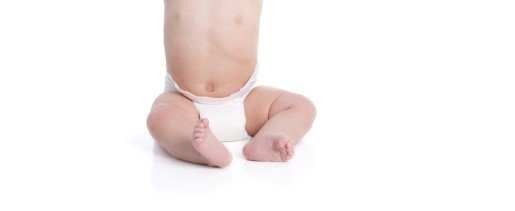
Freudenberg presents innovative solutions at INDEX17
Freudenberg is offering high-performance nonwoven fabrics for diapers, which guide the wetness to the suction core, thus ensuring dry skin.

21st November 2017
Innovation in Textiles
|
Weinheim
 Modern diapers may look simple, but they hide some complex technology. A child needs five to six diapers a day. This corresponds to around 4,500 diapers in two and a half years. Depending on its size, the capacity of a diaper can be up to 500 ml. Freudenberg Performance Materials is offering high-performance nonwoven fabrics for diapers, which guide the wetness to the suction core, thus ensuring dry skin.
Modern diapers may look simple, but they hide some complex technology. A child needs five to six diapers a day. This corresponds to around 4,500 diapers in two and a half years. Depending on its size, the capacity of a diaper can be up to 500 ml. Freudenberg Performance Materials is offering high-performance nonwoven fabrics for diapers, which guide the wetness to the suction core, thus ensuring dry skin.
Whether girl or boy, urination delivers a large amount of fluid in a small area. To ensure that the fluid is absorbed as well as possible, an ingenious high-tech system is required. Firstly, a skin-friendly fleece, the topsheet, absorbs the moisture. The underlying ultra-thin layer, also referred to as a distribution layer, then ensures the rapid and uniform spreading of the liquid across the entire diaper. The underlying layer can absorb multiple times its own weight of liquid.
These so-called super absorbers consist of high-tech fibres (mostly in powder form), which swell when liquid is absorbed, transforming into a gel and ensuring that no liquid is released, even under pressure. In this way, the urine is securely contained.
Freudenberg Performance Materials in Jacarei, Brazil, supplies its customers in South and North America with nonwovens for the topsheet and distribution layer, known as ADL (Acquisition and Distribution Layer) for short. The latter is becoming increasingly important.
“Whereas diapers used to have to be as cheap as possible, consumers in Brazil and also worldwide are now paying much more attention to quality and want to ensure that their babies stay dry as long as possible,” explained Sonia Mancilha, Head of Supply Chain Management in South America. “Our special nonwoven ADL is the heart of a diaper and significantly increases its overall performance.”
“A diaper without ADL would need to be changed more frequently because the super absorber would not be able to absorb as such intense doses of liquid. This would result in a significantly higher number of diapers being consumed. As a result, using a distribution layer also makes a contribution to sustainability,” said Marcus Simon.
As Business Segment Manager Medical at Freudenberg Performance Materials in Weinheim, Germany, he was intensively involved in the production of the special polyester nonwoven and has worked with customers on its further development. “We have continuously improved the ADL and have meanwhile been able to reduce the amount of material used without compromising performance,” he said. Through the course of their history, diapers have become ever thinner and more absorbent.
Opinions are divided on the life cycle assessment of the different diaper systems. According to the German Federal Environment Agency, reusable cloth diapers are not automatically more environmentally friendly. Although fewer raw materials are consumed in their production, they need to be boil-washed after each use. In addition, pesticides, mineral fertilisers and large volumes of water are often used in the cultivation of the cotton used in cloth diapers.

Business intelligence for the fibre, textiles and apparel industries: technologies, innovations, markets, investments, trade policy, sourcing, strategy...
Find out more